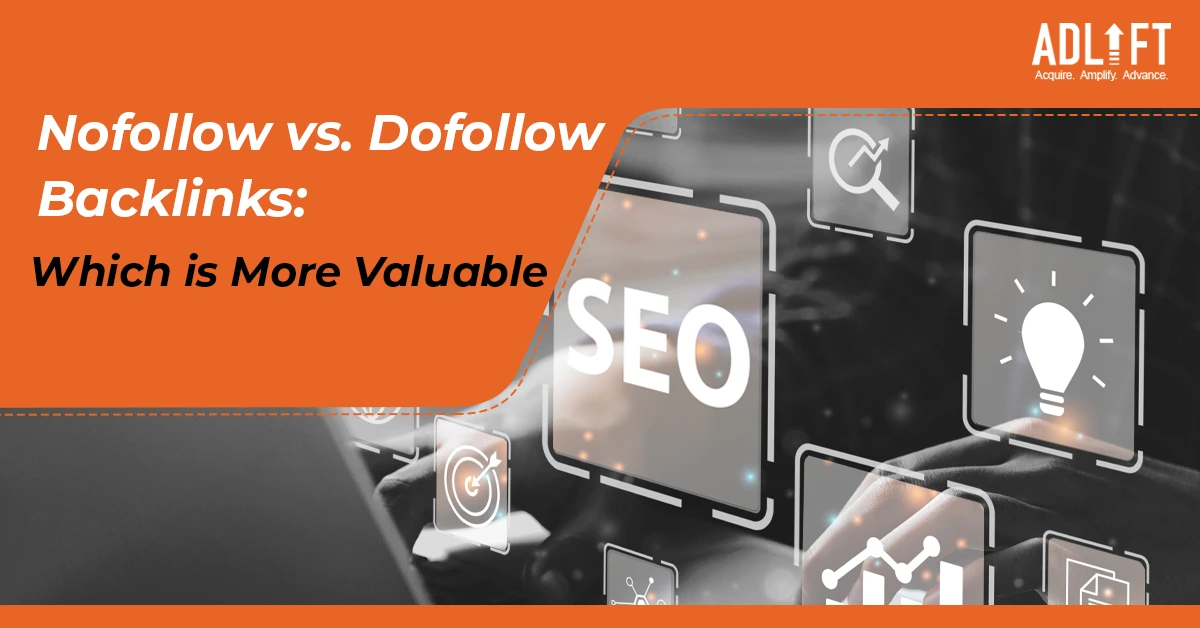Nofollow vs. Dofollow Backlinks: Which is More Valuable for SEO?

When it comes to building backlinks for your website, there are two types of links that are commonly talked about in the SEO world: nofollow and dofollow backlinks. But which one is more valuable for your SEO efforts?
First, let’s define what these types of links are. A nofollow backlinks are links that have a rel=”nofollow” attribute in its HTML code. This attribute tells search engines not to follow the link and not to pass any PageRank or authority to the linked website. On the other hand, a dofollow backlink is a link that doesn’t have the rel=”nofollow” attribute and is therefore seen as a “vote” for the linked website.
Now, let’s talk about which type of link is more valuable for SEO. The truth is, both types of links can be valuable for your SEO efforts, but for different reasons.
The Value of Nofollow Backlinks
While nofollow backlinks don’t pass any PageRank or authority to the linked website, they can still be valuable for your SEO efforts. Here’s why:
They Can Drive Traffic to Your Website
Even though nofollow backlinks don’t pass any PageRank or authority, they can still drive traffic to your website. If someone clicks on nofollow backlinks and ends up on your website, that’s still a potential customer or client that you wouldn’t have had otherwise.
They Can Help with Brand Visibility
If your website is mentioned on a high-traffic website, even if the link is nofollow, it can still help with brand visibility. The more people see your brand name and website, the more likely they are to remember it and visit it in the future.
They Can Help with Link Diversity
Having a diverse link profile is important for your SEO efforts. If all of your backlinks are dofollow, that could look suspicious to search engines. By having a mix of nofollow and dofollow backlinks, you can show search engines that your backlink profile is natural and not manipulated.
The Value of Dofollow Backlinks
While nofollow backlinks can be valuable for your SEO efforts, dofollow backlinks are generally seen as more valuable. Here’s why:
They Can Pass PageRank and Authority to Your Website
When a website links to your website with a dofollow backlink, it’s essentially giving your website a “vote” of confidence. That vote can help to pass PageRank and authority to your website, which can help it to rank higher in search engine results pages (SERPs).
They Can Help with Keyword Rankings
If a dofollow backlink is placed with relevant anchor text (the clickable text of the link), it can help to signal to search engines what your website is about. This can help to improve your keyword rankings for the targeted keyword.
They can Help to Build Relationships
Building relationships with other websites in your industry can be valuable for your overall online presence. By getting dofollow backlinks from high-quality websites in your industry, you can show search engines that your website is a trusted source of information.
In conclusion, both nofollow and dofollow backlinks can be valuable for your SEO efforts. Nofollow backlinks can help with driving traffic, brand visibility, and link diversity, while dofollow backlinks can help with passing PageRank and authority, keyword rankings, and building relationships. It’s important to have a mix of both types of links in your backlink profile to show search engines that your link-building efforts are natural and not manipulated.
FAQs
Ans: When it comes to backlinks, they fall into two major categories; ‘Nofollow’ and ‘Dofollow’ backlinks. Dofollow links pass link juice and help your website’s SEO. On the other hand, ‘nofollow’ inks don’t pass any link juice and subsequently don’t affect your website’s SEO. Typically, ‘nofollow’ backlinks are used for any links that the website owner does not want to endorse.
Ans: No, ‘nofollow’ links are not completely useless and should not be overlooked when working on your website’s SEO. While ‘dofollow’ links provide link juice and positively impact your SEO, ‘nofollow’ links still have some other benefits:
- Nofollow links provide referral traffic. Users can still engage with your content if they click on these links.
- They can increase your brand exposure.
- A mix of ‘nofollow’ and ‘dofollow’ links can make your diverse link folio appear more natural to search engines, increasing your website’s credibility.
Ans. Yes, nofollow backlinks can still drive traffic to your website. However, they may not directly affect your search engine rankings. Since nofollow backlinks can increase your website’s exposure, they can be an indispensable part of your strategy to increase website traffic.
Ans: As per leading SEO experts and Search engines like Google, nofollow links are largely ignored by search engines when determining a website’s rankings. Simply put, nofollow links are useless in increasing your website’s authority. However, they can have a positive impact on your website’s traffic.
Ans: Search engines prioritize dofollow backlinks over nofollow for their ranking algorithms. Search engines like Google only check for dofollow backlinks; if your link folio is impressive, they improve your website’s visibility. On the other hand, nofollow backlinks are not directly considered as direct ranking signals, but they still have referral value. Both these links are treated very differently by search engines.
Ans: While dofollow backlinks are an important part of SEO strategy, they cannot be the only factor website owners should rely on. To see a real-time change in your website’s rankings, you must also focus on other factors. For example, content quality, link diversity, on-page optimization, user experience etc., are important factors to consider while creating an effective SEO strategy.
Ans: Yes, several benefits come with having a mix of nofollow and dofollow backlinks:
- It can help you increase your rankings and visibility.
- It helps create a natural link profile, improving your site’s credibility.
- A mix of dofollow and nofollow links creates a diverse link folio, mitigating several risks.
Ans: To identify if a backlink is dofollow or nofollow, you can follow these steps:
- Inspect the HTML code: Right-click on the webpage and click ‘inspect’. This will open up the browser developer tools.
- Locate the backlink: The next step is to locate the backlink. Check for an HTML element that represents the backlink you want to check.
- Check for the value of the ‘rel’ attribute: When you scan the ‘rel’ attribute, it shows the relationship of the link with your website. If it shows ‘nofollow’, the link is a nofollow link and vice versa for ‘dofollow’ links.
Categories
Recent Posts
- Boost Your Website’s Visibility with These Must-have B2B SEO Tools January 13, 2025
- Master Your Digital Strategy: Learn the 7 Types of SEO That Lead to High Rankings January 13, 2025
- How to integrate your SEO and paid search strategies to maximize efficiency and reduce CAC January 6, 2025
- SEO in 2025: Adapting to a Changing Search Landscape By Prashant Puri, CEO & Co-Founder, AdLift January 3, 2025
- Understanding the Google December 2024 Spam Update: What You Need to Know December 31, 2024
- Dermatology Marketing Made Easy: Proven Techniques to Grow Your Client Base December 30, 2024
- Facebook vs Twitter: Which Platform Wins for Your Marketing Goals? December 30, 2024
- Discover the Top Digital Marketing Strategies for 2025 December 30, 2024
- The Art of Naming Conventions in Marketing Campaigns: Best Practices for Clarity and Success December 30, 2024
- 2024 Google Search Trends in the United States: What Captured Our Attention This Year? December 24, 2024
Get
in Touch
Contact AdLift for a 360-degree marketing plan


